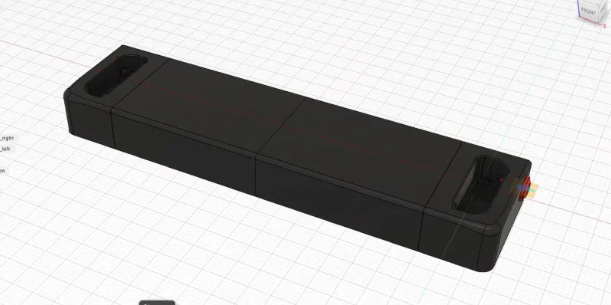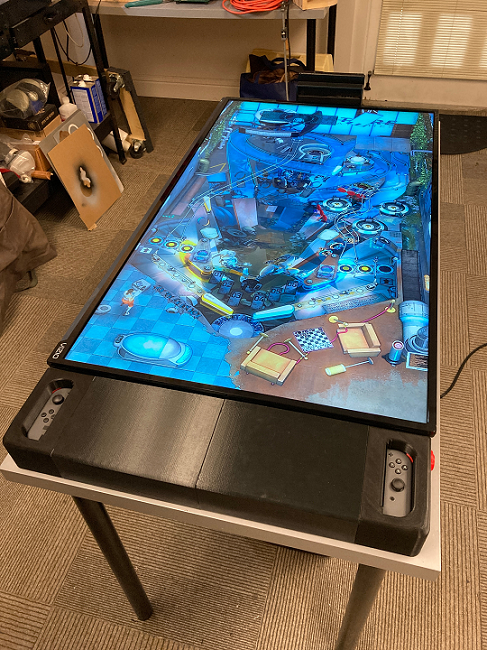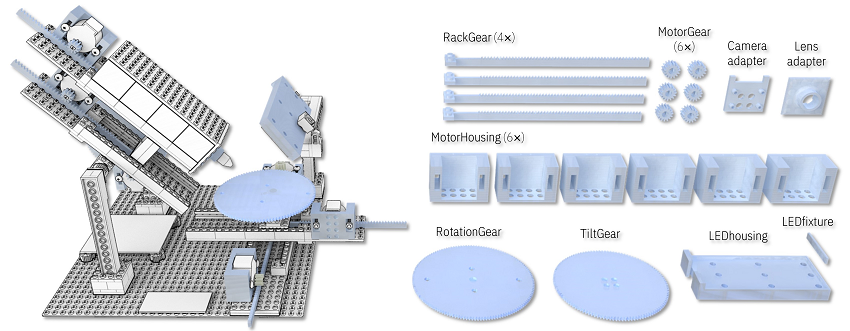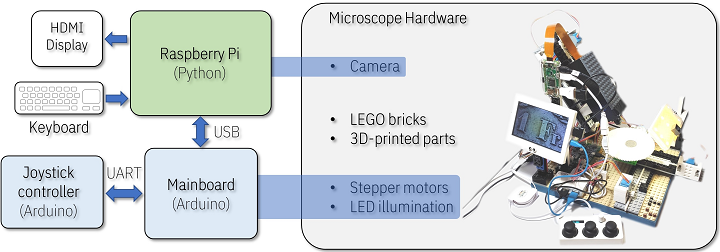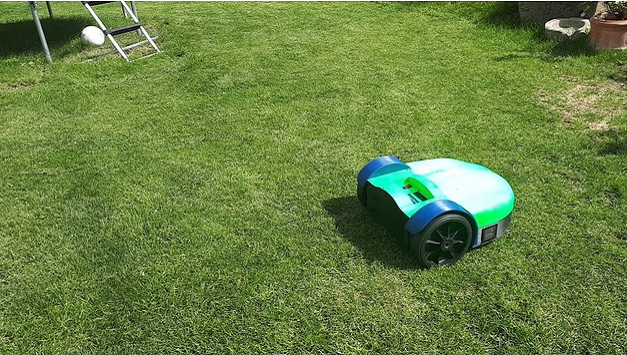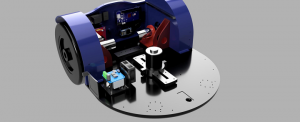“Ever since I was a young boy I’ve played the silver ball…From Soho down to Brighton I must have played them all.” – Pete Townshend, The Who
Now that I’ve got “Pinball Wizard” stuck in your head, let’s talk about this classic arcade game. The concept is pretty simple: you use game paddles, or flippers, to manipulate the little metallic balls on the game field inside the glass-covered cabinet, or pinball machine, to score as many points as you can. It’s so popular that many gaming consoles like the hybrid Nintendo Switch, have their own versions, in case players can’t get themselves to an actual arcade—do those even exist anymore?
The Switch can be plugged into a docking system and played on a TV, or used as a mobile gaming device with a touchscreen interface. Naturally, many people have used 3D printing to hack the system, and customize the multi-use JoyCon controllers however they want, which brings us back to pinball. Maker Tommy Williamson is the founder of the Nerds&Makers community, which is exactly what it sounds like — the members visit the site to “showcase cool projects, to promote makers, to find inspiration, to teach, to learn and most importantly to connect with other makers and like-minded individuals.”
Williamson found that playing pinball on the Switch was difficult with the standard JoyCon shoulder buttons, which are decidedly not the typical flipper controls used to play the original game. He did what many a maker has done before, and used 3D printing to create a custom solution. The JoyCon dock he created, which he dubbed the SwitchPin, makes it much easier to play the game. Basically, the controller turns two buttons on the JoyCon into two different buttons for optimal pinballing.
“Sometimes two buttons really need to be two other buttons, and in those times we should not let anything get in the way of a creative solution,” Kotaku writer Mike Fahey wrote about Williamson’s creation.
The SwitchPin is an ingenious solution. Basically, Williamson modeled two blocks, and fitted them with pinball arcade flipper buttons. Then, he 3D printed the blocks out of black Hatchbox PLA on his Prusa i3 Mk3 3D printer; the buttons were printed in red, and he recommends using the printer’s quality settings due to the tight tolerances of the design. Once the print job was finished, he had to spend some time removing supports from the blocks, and then did a little sanding to, as he wrote on Thingiverse, “tweak things to be just right.”
He used 3/8″ x 5/8″ springs from a Harbor Freight box set to make the flippers work, and assembled the SwitchPin with M3 screws – no soldering required.
“I recommend drilling and tapping the frames, the center parts use nuts. I used M3 20mm and 25mm,” Williamson wrote. “To keep it from sliding around there’s small wells on the bottom for rubber pads. I used hemispherical ones from this pack.”
As you can see in the image above, there’s a slot for a JoyCon controller inside each block, and the controller’s shoulder buttons line up perfectly with the arcade button actuators. Then, Williamson added enough black plastic in between the two blocks to make the whole thing the length of his TV when on portrait mode. He removed the TV from the wall, set it on a table, placed the 3D printed SwitchPin at the bottom, set the Nintendo Switch to the correct view, and started playing the game the way pinball is meant to be played. It’s a pretty impressive setup.
You can get the 3D printing files to make your own SwitchPin pinball controller for free on Thingiverse. Take a look at the video below to see Williamson’s whole building process:
I was curious about what other interesting 3D printable Switch adaptations people have been making, so I searched a few 3D model repositories and found some interesting designs. Mechatronics engineer Julio Vazquez, also known as Vexelius, created these JoyCon adapters that allow disabled gamers to play with just one hand, and also came up with this Accessibility stand “to provide an easy to print and non invasive mod that will help disabled players enjoy a better experience.”
“The SL and SR buttons, which are small and difficult to press are now easier to reach, thanks to a couple of extensions; and an optional cross-shaped cover for the buttons will help users that might not have the accuracy to press the small buttons in the Joy-Con,” Vazquez wrote.
On Cults 3D, I saw this JoyCon Wristband for playing the “Just Dance” game on the Switch, which has two slot sizes, and I also found two different versions of a Nintendo Switch Joy Con Controller Drink Holder.
(Images courtesy of Nerds&Makers)
The post Giant Pinball Machine Made by Hacking Nintendo Switch Controllers with 3D Printing appeared first on 3DPrint.com | The Voice of 3D Printing / Additive Manufacturing.


